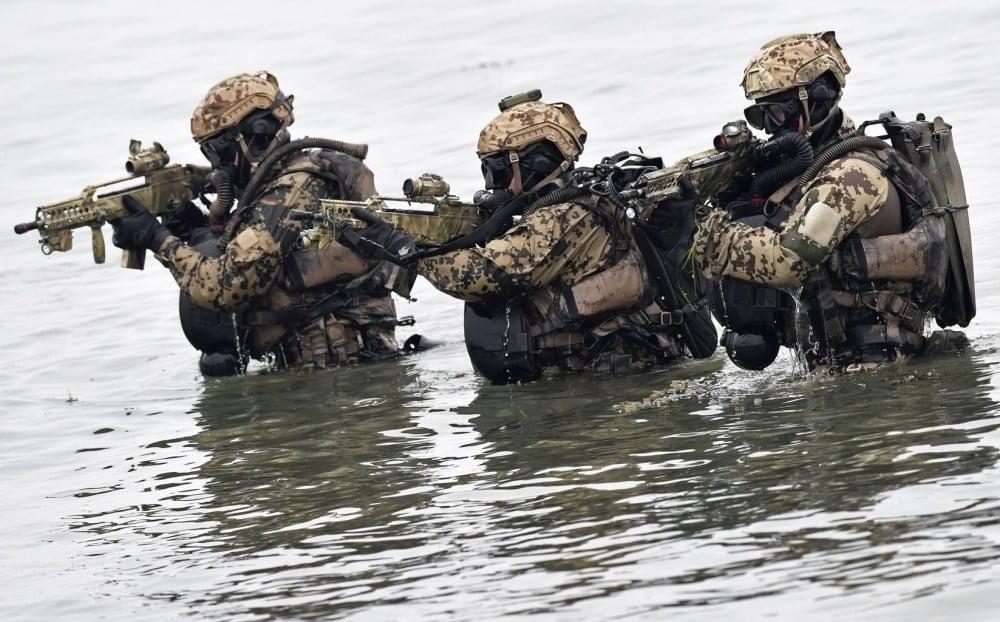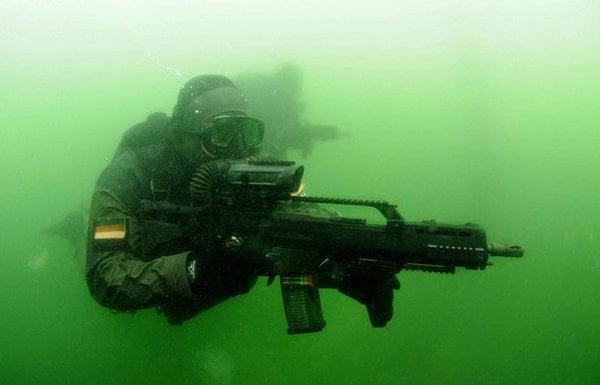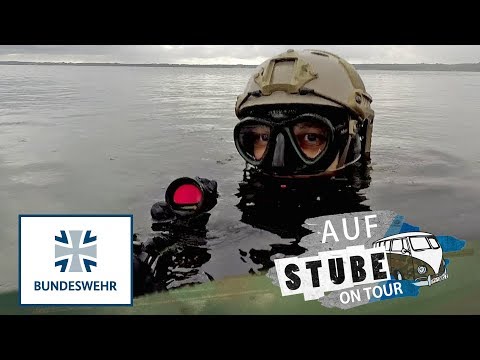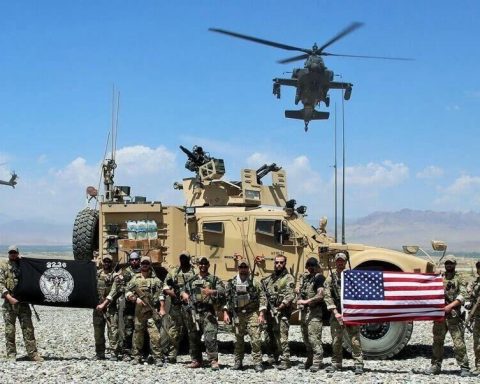The elite detachment of combat divers, Kommando Spezialkräfte Marine (KSM), is a special unit of commandos of the German Navy that may serve as Germany’s response to the US Navy SEALs. Against the background of the current situation in the world (cold wars, sea piracy, etc.), KSM acts as an essential tool of Germany’s foreign policy, and they are ready to strike anywhere and anytime if Berlin’s interests are questioned. KSM was established solely for special operations under the water.
History
Special forces in the naval forces of Germany appeared relatively recently. France trained first-ever German military divers in 1959. The task of the German battalion “Specialized operational marine forces” (Spezialisierten Einsatzkräften der Marine) included special operations on land and under the water. From 2003 to 2014, the battalion was one of the most sought-after units of the German army.
This previous unit combined combat divers with other naval warfare specialists, including mine-clearance divers and boarding soldiers. But as part of a major reorganization across the German military, the naval commandos split up into independent organizations. The combat swimmers/divers (Kampfschwimmer) at Eckernförde became the KSM and are now responsible for handling their training, logistics, and operations.
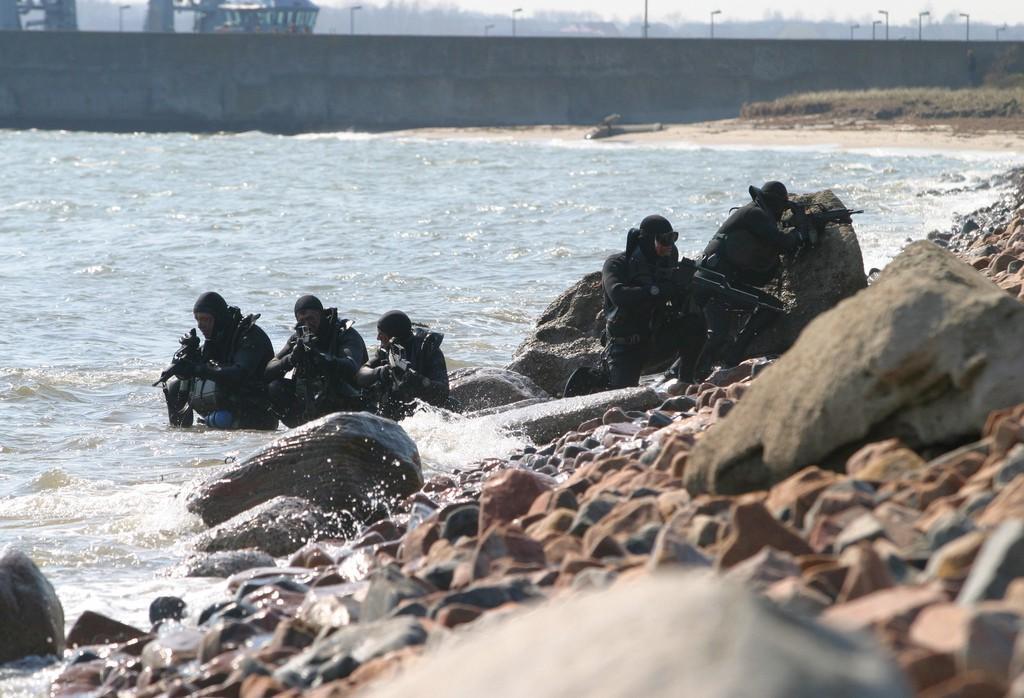
Mission
Kommando Spezialkräfte Marine (KSM) has three main courses of action:
- The divers reconnoiter port facilities, beaches and hinterland
- direct action—which can involve freeing hostages or seizing material or equipment.
- Training of foreign military and police units
Operations
KSM conducted special operations in Afghanistan, Cyprus, Lebanon, Kosovo, and Somalia. In the recent reorganization of the German Navy, the battalion was divided into several groups. In April 2014, a fundamentally new military organization was created – special forces of commando divers – Kommando Spezialkräfte Marine, or KSM.
While their exploits were not widely publicized, combat divers were active in Afghanistan, Cyprus, Lebanon, Kosovo, and Somalia. Typical missions included watching convoy routes and roads and gathering intelligence.
“In the last 10 years our partner units in the United States, the Navy SEALs, or the British SBS, were heavily involved in desert-like areas in Afghanistan.”
— an unnamed KSM soldier told the German armed forces’ official publication.
In Lebanon, a force of around 45 mine-clearance divers carried out harbor security operations while their comrades stayed on German warships patrolling off the coast. Near Somalia, operators contributed to the European Union’s anti-piracy mission known as Operation Atalanta.
Organization
The Kommando Spezialkräfte Marine is based in the German city of Eckernförd, where the entire fleet of German submarines is deployed.
The tasks of Kommando Spezialkräfte Marine (KSM) special forces include reconnaissance and sabotage activities on the water, under the water, and in the coastal zone. Missions can also be life-saving, peacekeeping, aimed at protecting and ensuring the security of any objects (ships, oil, and offshore gas platforms). The unit’s work is often conducted under the aegis of NATO or the UN.
“The new military structure has a narrow specialization, this allows us to better perform the tasks set. Guys do their work professionally, and it is the most important thing for me.”
— the commander of KSM, Jorg Buddenbaum
Structure
Each mission usually involves four or five military divers – a commander, a sniper, a medic, a radio operator, and an observer.
Selection and training
The German Armed Forces do not disclose information on the number of Kommando Spezialkräfte Marine operators. According to various reports, about 130 men (only men can serve in KSM).
Training
The KSM regularly trains with the US Navy SEALs in a partnership that dates back around 40 years. At any time, at least one SEAL instructor embeds with the KSM in exchange for a German frogman. The naval commandos also maintain close ties with the French Navy’s combat swimmers, known as the Commando Hubert.
Selection
KSM candidates have to undergo an exceptionally intense 3-year training course. In the training process, candidates master the knowledge and skills necessary for naval commandos: diving, parachute jumping, rock climbing, counter-terrorism training, and boat and ship navigation. As a rule, only 30 percent of candidates join the rank of KSM service members. To date, KSM is considered one of the German army’s most highly trained special units.
Weaponry and gear
KSM has the most modern equipment and weapons available in the West. From equipment for diving missions to weapons for hostage rescue missions, combat divers mainly use HK416 as their primary weapon while at their disposal as sidearms are Glocks and SIGs. They also have various submachine guns at disposal, including HK MP7, MP5, and UMP models.
Among the equipment available to the combat divers are the locally-made Dräger LAR-V chest-mounted rebreather, which produces next to no bubbles. They also have the secretive P11 underwater pistol developed by Heckler & Koch, which fires steel darts rather than conventional ammunition. KSM divers use submarine scooters to move underwater, while air cushions, speedboats, kayaks, etc., are used on the water surface.

